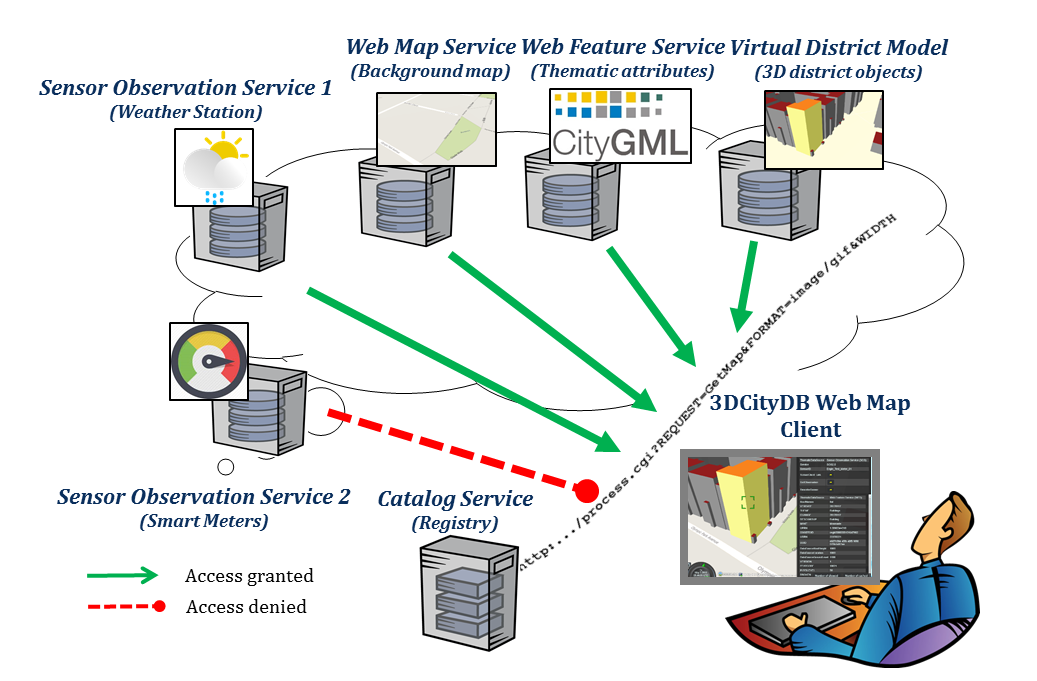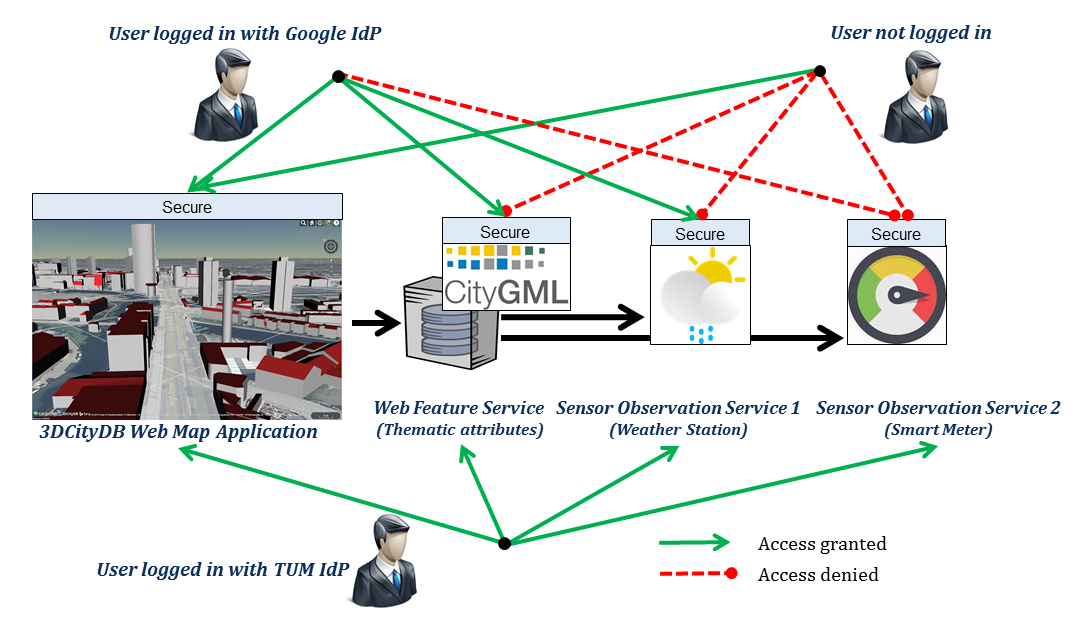Description
This demonstrator application, developed by the Technical University of Munich (Chair of Geoinformatics) and Secure Dimensions GmbH, presents a novel approach of securing distributed applications and web services being used in Smart City scenarios. The application has been realized for the district Queen Elizabeth Olympic Park, London as a part of the project Smart District Data Infrastructure (SDDI) funded by the Climate-KIC of the European Institute of Innovation and Technology (EIT).
The newly introduced concept establishes proper authorization and authentication to allow privacy, security and controlled access to all stakeholders and the respective components. The implementation combines the use of state-of-the-art concepts such as OAuth2 access tokens, OpenID Connect user claims and Security Assertion Markup Language (SAML) based Single-Sign-On (SSO) authentication. The application is conformant to the EU General Data Protection Regulation (GDPR).
Components used in the demonstrator

- Virtual District Model based on the international CityGML standard. It comprises of semantic 3D building and street models with spatial and thematic information stored in a 3D geodatabase.
- Web Feature Service allowing users to retrieve as well as modify objects from the virtual district model stored in the 3D geodatabases using interoperable interfaces.
- Sensor Observation Service 1 retrieving real-time observations from a weather station installed in the park. The weather station records properties such as temperature, humidity, wind speed etc.
- Sensor Observation Service 2 retrieving real-time observations from smart meters installed in important buildings in the park. The smart meters are managed within a proprietary platform and record electricity and gas consumptions for the buildings. However, in this public demonstrator, dummy data is being used as observations for smart meters due to confidentiality of the data.
- 3DCityDB Web Map Client is a web-based front-end of the 3D City Database for high-performance 3D visualization and interactive exploration of arbitrarily large semantic 3D city models in CityGML.
Demonstrator Objectives

The demonstrator provides
- security layers to all of the resources, so that no resource can be accessed without proper authentication,
- federated login and Single-Sign-On access to all the secured resources hosted on distributed systems with one login, and
- Access control to all the secured resources. Users can login via different identity providers: (i) through educational services supported by eduGAIN or (ii) through a valid Google account. However, the access rights vary to different users.
In the scenario, if a user is not logged in, he/she can browse/view the 3D models but cannot connect to any further resource. Users logged in using Google Identity Provider can access all resources except Sensor Observation Service 2 for smart meters, while users logged in through eduGAIN services Identity Provider can access all resources.
System Requirements
The hardware on which the application will be run must have a graphics card installed that supports WebGL. In addition, the web browser in use must also provide appropriate WebGL support.
You can visit the WebGL website to check whether your web browser supports WebGL or not.
The application has been successfully tested on (but is not limited to) the following web browsers under different desktop operating systems like Microsoft Windows, Linux, Apple Mac OS X, and even on mobile operating systems like Android and iOS.
- Apple Safari
- Mozilla Firefox
- Google Chrome
- Opera
For best performance, it is recommended to use Google Chrome.
More details
K. Chaturvedi, A. Matheus, S. H. Nguyen and T. H. Kolbe, "Securing Spatial Data Infrastructures in the Context of Smart Cities", 2018 International Conference on Cyberworlds (CW), Singapore, 2018, pp. 403-408. DOI: 10.1109/CW.2018.00078